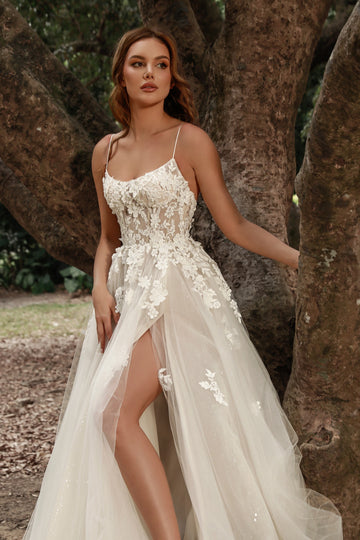Understanding the Makeup Artist's Portfolio: A Comprehensive Guide
Understanding the Makeup Artist's Portfolio: A Comprehensive Guide
Introduction
In the beauty industry, a makeup artist's portfolio is essential for showcasing skills, creativity, and experience. A compelling portfolio not only attracts potential clients but also reflects the artist's unique style and artistic vision. In this guide, we will delve into the nuances of understanding a makeup artist's portfolio, covering essential elements, tips for creating one, and how to evaluate different portfolios effectively.
What is a Makeup Artist’s Portfolio?
A makeup artist's portfolio is a curated collection of images, videos, and descriptions that display their best work. It serves as a visual resume, allowing clients to gauge the artist’s style, versatility, and expertise in various makeup applications. A well-organized portfolio can differentiate a makeup artist in a competitive market.
Key Elements of a Strong Makeup Artist Portfolio
When assessing a makeup artist's portfolio, several key elements should be taken into consideration:
- Variety of Work: A diverse portfolio showcasing different styles such as bridal, editorial, special effects, and avant-garde makeup demonstrates the artist's range.
- Quality of Images: High-resolution images with good lighting and composition are crucial for displaying makeup details effectively.
- Before and After Shots: Including transformation images helps potential clients visualize the artist's skill in enhancing a client's appearance.
- Client Testimonials: Positive reviews or testimonials add credibility and help build trust with prospective clients.
- Professional Presentation: A well-organized and aesthetically pleasing layout reflects professionalism and attention to detail.
How to Create an Effective Makeup Artist Portfolio
If you’re a makeup artist looking to create or improve your portfolio, here are some valuable tips:
1. Gather Your Best Work
Start by selecting your best photographs that represent various makeup styles. Choose a balance of different looks that showcase your versatility.
2. Focus on Quality
Ensure that the images are high resolution with good lighting. A professional photographer's assistance may enhance the quality of your portfolio significantly. Professional images are ideal, but well-captured high-quality photos can also work.
3. Organize by Categories
Consider categorizing your work into sections, such as bridal, fashion, special effects, and more. This organization allows potential clients to navigate easily and find what they are looking for.
4. Include Descriptions
For each image, write brief descriptions that provide context. Explain the makeup techniques used, the concept behind the look, and any notable clients or events.
5. Keep It Updated
A portfolio should not be static. Regularly update it with new work to keep it relevant. Remove older images that no longer reflect your current skill level or style.
6. Utilize Social Media
Consider using platforms like Instagram and Pinterest to showcase your portfolio. These platforms allow for increased visibility and engagement with a broader audience. Include links to your social media in your portfolio.
Evaluating a Makeup Artist's Portfolio
When choosing a makeup artist for an event or project, evaluating their portfolio is vital. Here’s a checklist to assist in your evaluation:
| Criteria | What to Look For |
| Style | Does their style align with your vision? |
| Skill Level | Are the makeup techniques executed proficiently? |
| Experience | Do they have experience relevant to your needs (e.g., bridal, film)? |
| Feedback | What do previous clients say about their work? |
| Professionalism | Does their portfolio reflect a professional image and branding? |
Common Mistakes to Avoid
Regardless of whether you’re creating or reviewing a portfolio, certain mistakes can undermine its effectiveness:
- Inconsistency: Avoid using images from various photo quality levels. Consistency in quality creates a polished presentation.
- Overcrowding: Resist the urge to include every piece of work. Highlight only your best to maintain quality over quantity.
- Neglecting Context: Don’t leave out descriptions. Context helps viewers understand your creative thought process.
- Poor Presentation: Avoid cluttered layouts that make it hard to focus. Ensure it is organized and visually pleasing.

The Role of Social Media in Portfolio Building
Social media plays a pivotal role in today's beauty industry. Makeup artists are leveraging platforms like Instagram, TikTok, and YouTube to showcase their work and connect with potential clients. Here's how:
1. Share Regularly
Frequent posts keep your audience engaged and allow for continuous showcase of your latest creations.
2. Use Hashtags Effectively
Utilize popular beauty-related hashtags to increase visibility and attract followers who are interested in makeup artistry.
3. Engage with Followers
Answer questions, respond to comments, and engage with your followers to build a community around your work.
Conclusion
Understanding a makeup artist's portfolio is essential for both artists and clients. Whether you are an artist crafting your portfolio or a client evaluating potential hires, knowing what to look for can make all the difference. Remember that a strong portfolio is built upon quality work, effective organization, and regular updates. For artists, showcasing your talent through social media can further enhance your visibility and facilitate client engagement. For clients, staying informed about the portfolio evaluation process will help you make better decisions when selecting a makeup artist.
In summary, a well-rounded understanding of makeup artist portfolios can significantly impact decisions in the beauty industry. Always consider the details, such as variety, quality, and organization, alongside personal preferences. Good luck in your journey, whether you are an artist or a client!
